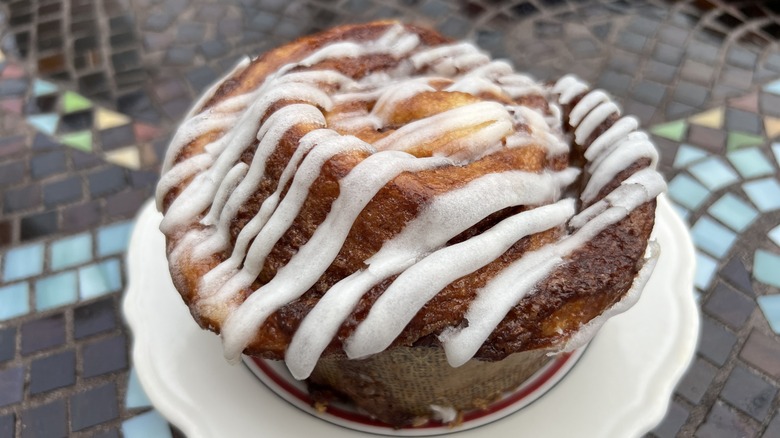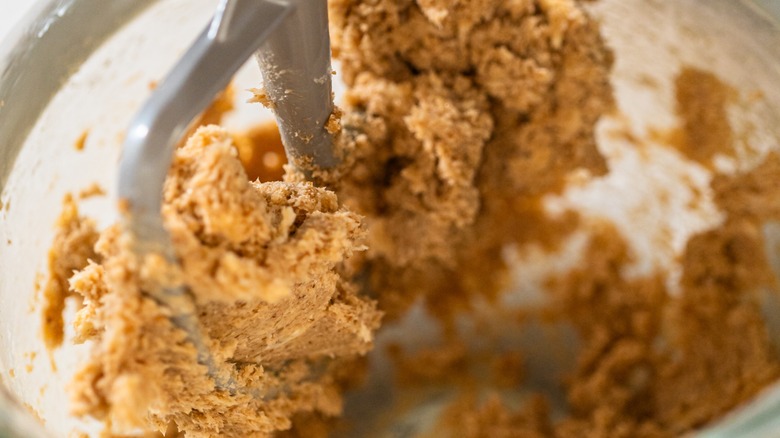The Type Of Butter To Avoid For Better Cinnamon Roll Filling
Grocery store cinnamon buns are all well and good — and can be made even better if you flavor the frosting — but if you have the ambition to tackle the homemade kind, you may find they're well worth the effort. For some advice on making sure your cinnamon buns turn out just right, The Takeout spoke with Julian Parker, who works as the culinary director at The Select. This southern mini-chain, consisting of locations in Charleston, South Carolina, and Atlanta, Georgia, is known for its super-sized cinnamon rolls. When we asked what makes the rolls so good, Parker told us that butter is a pretty crucial element.
Parker himself prefers an imported European butter due to its higher fat content, but you can still make excellent cinnamon rolls with the domestic kind if it better fits your budget. What you do need to do, however, is avoid using melted butter. "Softened butter is the best choice for cinnamon roll filling because it creates a spreadable paste that adheres to the dough without seeping out during rolling," Parker tells us. He explains that melted butter won't work so well, saying it "can lead to a runny filling that pools at the bottom of the pan instead of staying evenly distributed within the roll." Softened butter also does a better job of keeping the cinnamon and sugar mixture together, making for a more even coating.
You also need the right balance of butter and sugar
If you're being so bold as to develop your own recipe instead of working from a pre-existing one, Julian Parker advises that it's important to have the right proportions of butter and sugar. He says that a good butter-to-sugar ratio is 1:2, meaning that if you're using a cup of butter, you'll want two cups of sugar. "This balance provides enough fat to create a rich, gooey texture without making the filling greasy," he tells us. He also explains that "Using more sugar helps with caramelization and enhances the cinnamon's flavor."
To distribute the butter and sugar evenly, Parker suggests spreading the filling with a rubber spatula or pastry scraper. (A metal implement wouldn't be so gentle and might even tear the dough.) He also says to leave a half-inch border along the edges, as this will help prevent the filling from oozing out.
More tips for making cinnamon rolls
Apart from balancing the butter and sugar, which Julian Parker says will allow for "a gooey but controlled bake," there are a few more things you can do to help ensure that your cinnamon rolls are a success. First, make sure that your dough is well-proofed but not over-proofed. As Parker says, "Under-proofing leads to excess oven spring, forcing filling out, while over-proofing makes them too delicate."
Before you spread the filling over the dough, you should chill it to make it easier to handle. Just before you fill the dough, coat it with a light egg wash to help the filling stick. Make sure not to overfill, though, as this will lead to leakage. Once the filling is in place, roll the dough up tightly. According to Parker, "A loose roll leaves space for filling to seep out." After you've filled and shaped the cinnamon rolls, chill them once again. This, Parker says, "firms up the butter and helps set the structure, reducing leakage."


